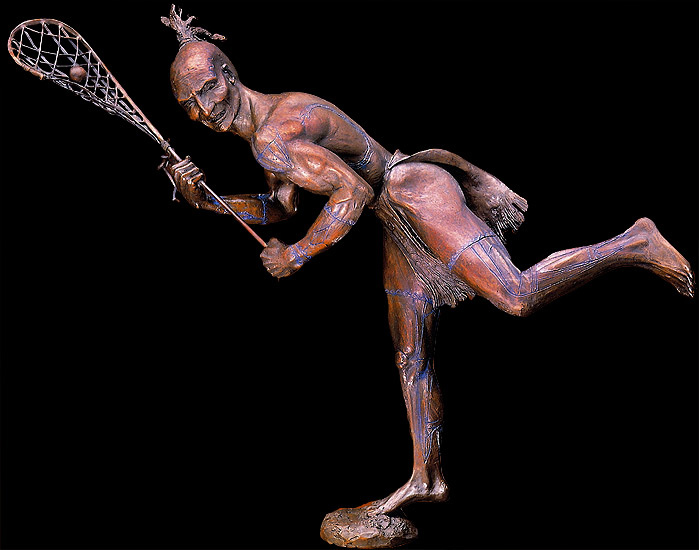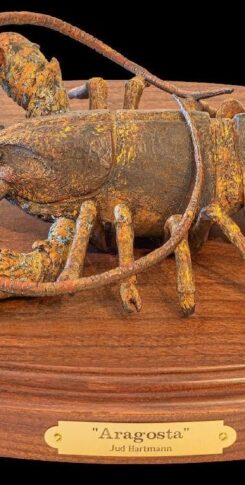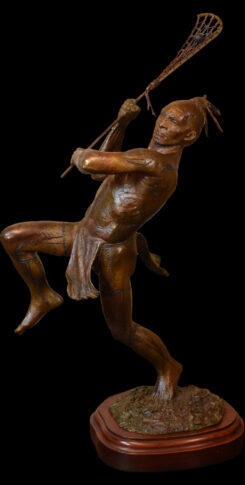Bronze edition: 10 | Height: 15″
Among the Iroquois of N,Y. State, lacrosse was a rough and tumble sport which served a multi- faceted purpose in their society: it was in time of peace an outlet for young me to channel competitive and aggressive behavior and an important avenue for them to demonstrate courage, stamina and skill, thereby gaining all- important prestige. Though it would serve as an alternative to war, it was at the same time a way in which young men could prepare themselves for the rigors of war and was thought of as “war’s younger brother”. Finally it was for the rest of the tribe a great form of entertainment which was suited well to the Iroquois’ love of gambling (large wagers were placed on the outcome of the match) and was therefore, for all the above reasons, played with the utmost intensity and ferocity.
Of the Iroquois themselves, their style of play was described as very physical but they combined that with fluid motion and were extremely graceful. During the 17th and well into the 18th century, they were the dominant military and political power among all the Northeastern tribes and held the balance of power between France and England in the colonial wars. They called themselves “Ongue-honwe”, that is, “Men surpassing all others.” In 1690 the French chronicler de la Potherie, echoed the sentiments of French Canada when he described them as “with doubt the fiercest, most formidable race on the continent.” The premier 19th century American historian Frances Parkman said of the Iroquois “…yet in them was often seen a native dignity of bearing which ochre and bears grease could not hide, and comported will with their strong symetrical and sometimes majestic proportions!”
From this fierce, proud people does the modern game of lacrosse most directly descend.
One of the editions of “Guhchigwaha” is installed at Hobart College, Geneva, N.Y., to commemorate an NCAA team record of 8 consecutive Div. III National Championships, 1980 – 1989.





